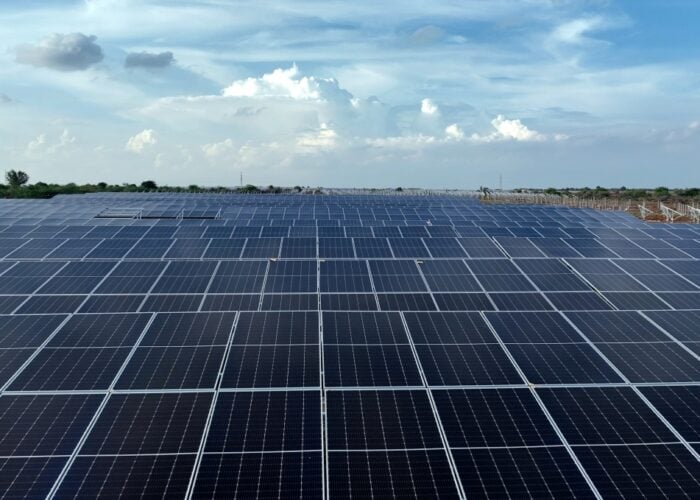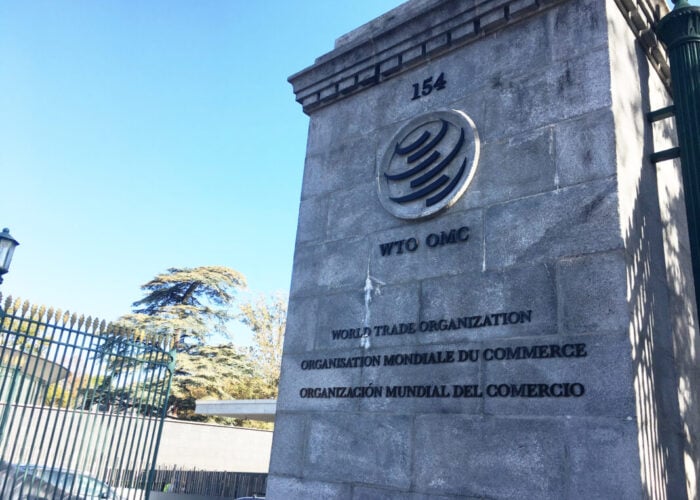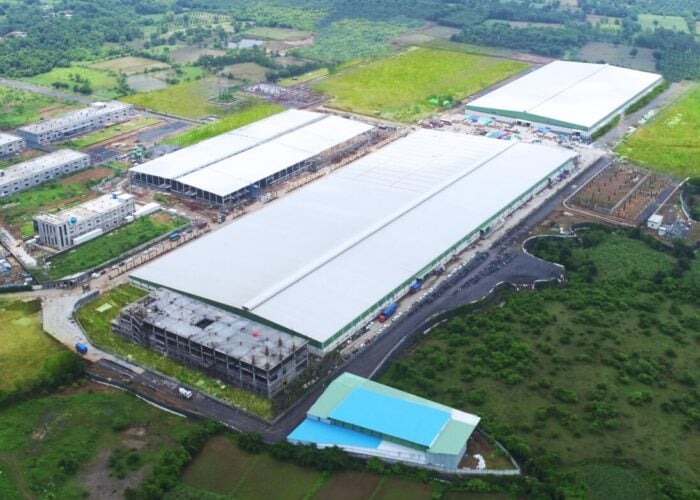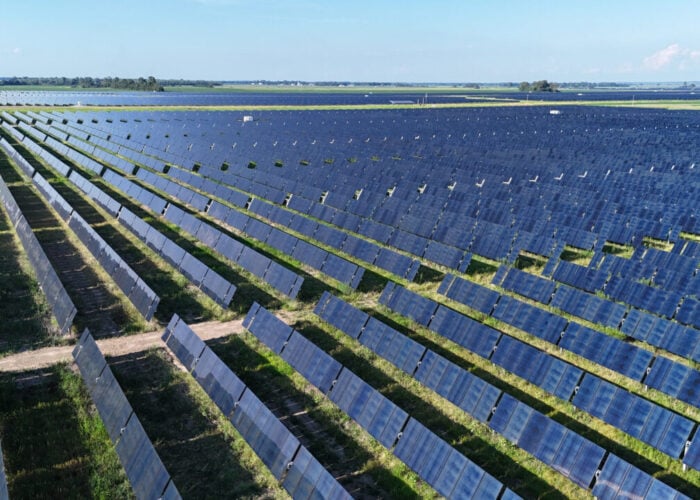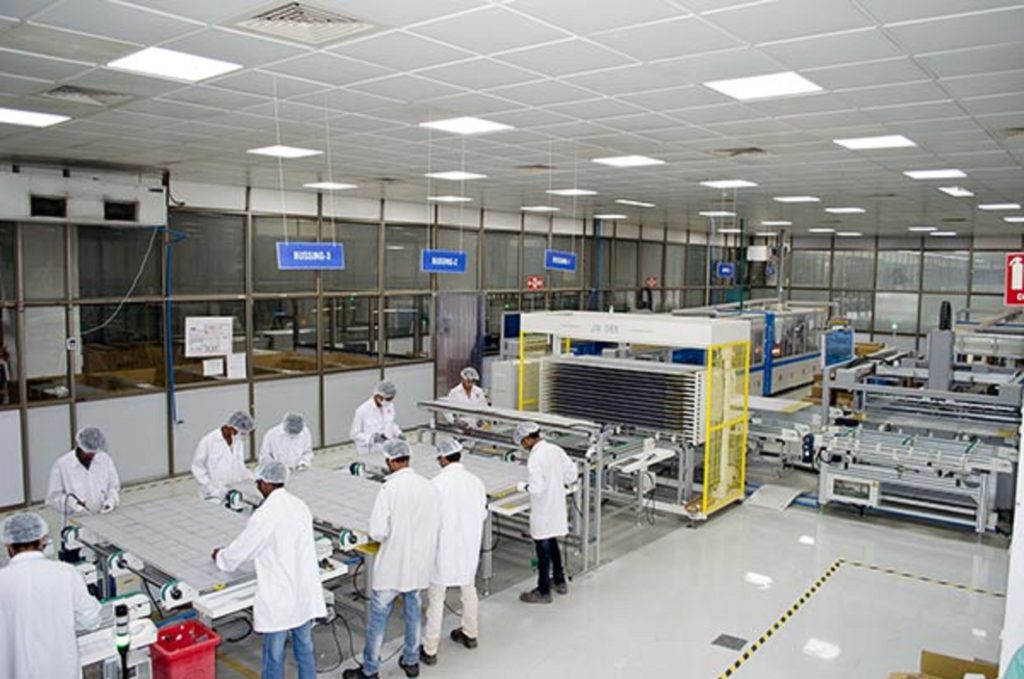
After ramping up cell and module production capacity last year, Indian solar manufacturer and EPC firm Tata Power Solar is eyeing further expansions as it bids to take advantage of efforts from India’s government to bolster domestic PV manufacturing.
Driven by an increase in demand for its products, the company, a wholly owned subsidiary of Indian utility Tata Power, last year increased Mono Passivated Emitter Rear Cell (PERC) capacity at its Bengaluru plant from 300MW to 530MW, while module assembly capacity (using half-cut mono PERC cells) at the site jumped from 400MW to 580MW.
Try Premium for just $1
- Full premium access for the first month at only $1
- Converts to an annual rate after 30 days unless cancelled
- Cancel anytime during the trial period
Premium Benefits
- Expert industry analysis and interviews
- Digital access to PV Tech Power journal
- Exclusive event discounts
Or get the full Premium subscription right away
Or continue reading this article for free
After media reports in November suggested Tata Power Solar is looking to set up a new manufacturing base in the Indian state of Tamil Nadu, the company has confirmed to PV Tech Premium that it has applied for 4GW of cell and module capacity under India’s production-linked incentive (PLI) programme, a government initiative to back the domestic development of high-efficiency PV modules.
“We are evaluating various sites. Tamil Nadu is not the only one but there are various sites and states we are evaluating,” says Ashish Khanna, president at Tata Power Renewables.
With India’s pledge to have 500GW of renewables capacity by 2030 combined with the government’s policy support for domestic solar manufacturers, Khanna says there is “huge potential” for manufacturing solar equipment in the country.
“I see a very bright future of manufacturing here. But you have to take one thing into consideration: that manufacturing is a long-term commitment, it is not a one-off case,” Khanna says. “You have to keep on investing into newer and newer technology after every three to five years, so that challenge remains. You need to be ahead of the curve” in terms of technology.
Indian PV manufacturers are set to benefit from upcoming tariffs that will see the country introduce a 40% basic customs duty on modules and a 25% duty on cells as of April. These are in addition to a 20% duty on inverters that came into effect last February.
While Khanna is looking forward to the new tariff barriers being introduced, he says India’s PV manufacturing sector needs to increase investment in research and development, scale and upstream manufacturing to help the country become self-sufficient and increase the potential for exports.
He is calling for a whole solar PV ecosystem to be fostered in India. “Suppose today I am importing all the machinery from outside, all the process technology from outside and then I am producing it. In three years I will be outdated,” he says.
“So it’s not only that the final product should be incentivised. I think we need to incentivise the whole ecosystem for it to become very sustainable and cost-effective in the long term.”
With a current annual module manufacturing capacity of around 8.8GW and cell capacity of 2.5GW, India is looking to scale up funding for the PLI scheme after the programme received bids for 54.5GW of manufacturing capacity. India’s minister of new and renewable energy, RK Singh, said in November that PLI funding could be increased more than five-fold to INR 240 billion (US$3.22 billion).
In addition to Tata Solar Power’s planned expansion, other companies looking to set up PV manufacturing bases in India include US thin film module manufacturer First Solar, which last month secured up to US$500 million in debt financing from the US International Development Finance Corporation for its planned 3.3GWdc module assembly facility in Tamil Nadu. Last year also saw local players including Vikram Solar, Premier Energies and Emmvee progress with manufacturing ramp-ups.
When Tata Solar Power completed the expansion of its Bengaluru facility last year, the company said it was based on the expected increase in demand due to supportive policies from the government to make the country more self-reliant.
Khanna says India-based PV manufacturers need to work toward being cost-competitive with Chinese imports for when policy support is eventually dropped. “I don’t think that these tariff barriers can actually sustain for a very long time,” he says. “By and large a stage will come where these barriers will go off. And at that particular time, we should have a scale and a cost which can beat any other imports from China.”

